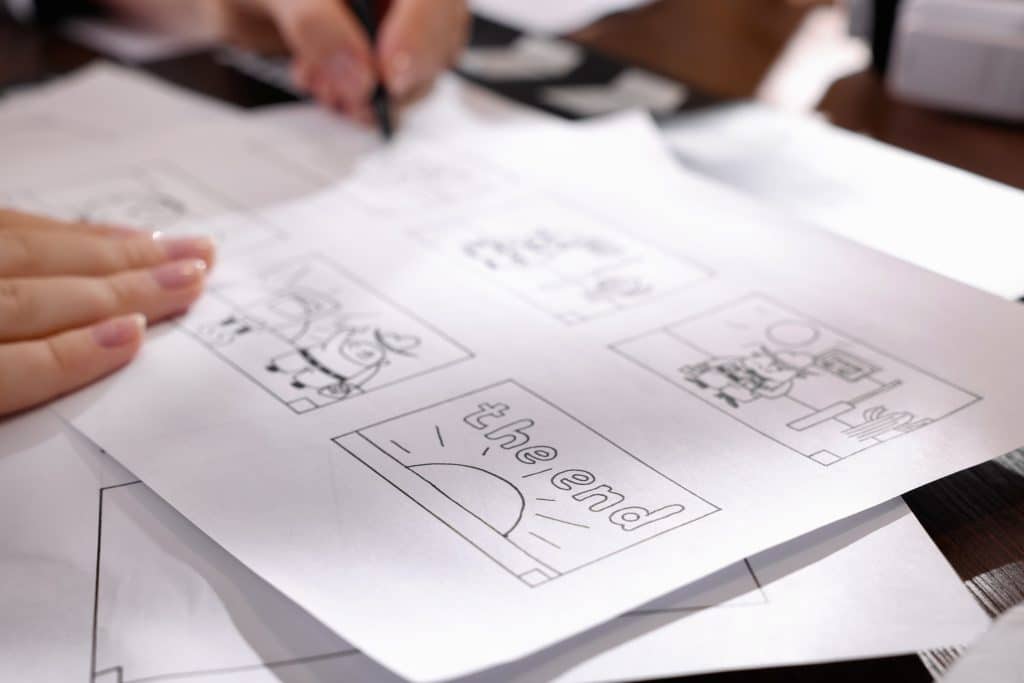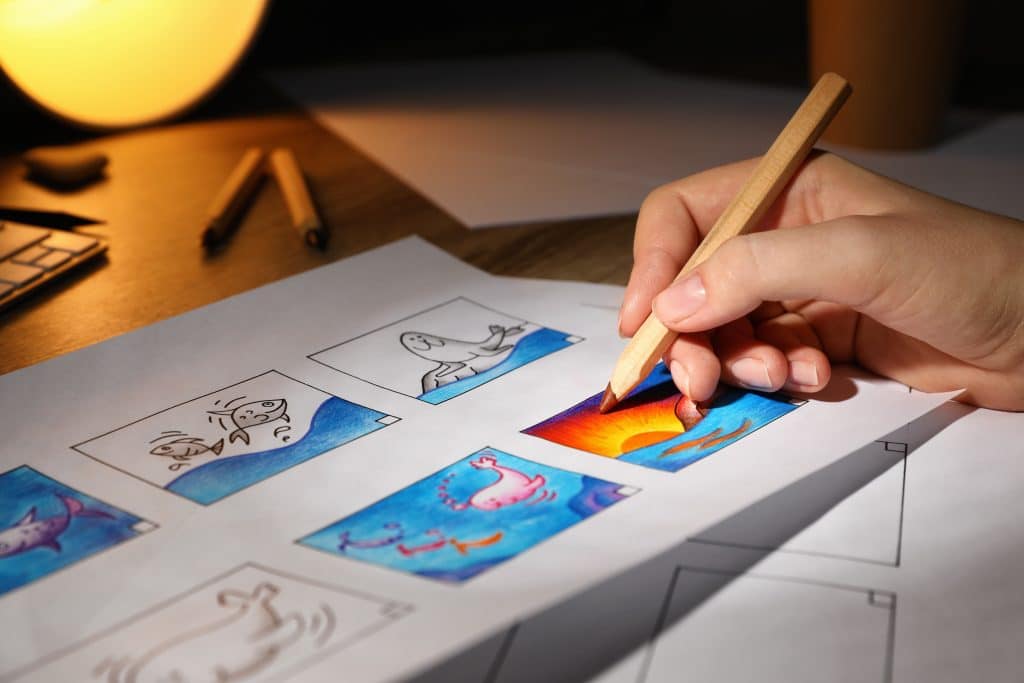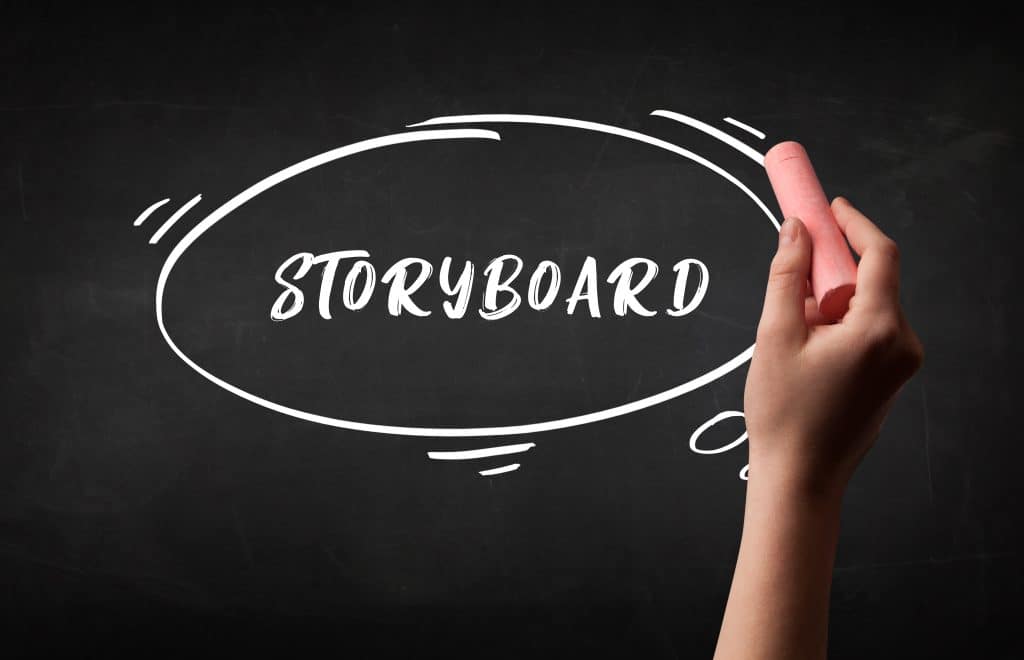When you hear the word “storyboard”, what often comes to mind are images of filmmakers meticulously planning their next blockbuster or animators sketching out scenes for an animated masterpiece. But did you know that storyboarding goes way beyond the glitz and glamour of the entertainment industry? In fact, it’s a hidden gem that holds immense value in the realm of education! Yes, that’s right — storyboarding is not just for the silver screen; it’s an essential and powerful tool in classrooms too! In this exciting blog article, we’re about to unveil the hidden wonders of storyboarding in education. From igniting creativity to simplifying complex concepts, storyboarding has become a game-changer in education, transforming the way educators teach and students learn.

Storyboards in Educational Context
In education, storytelling holds significant importance as it possesses a remarkable ability to spark curiosity, ignite imagination, and enhance information retention. When we incorporate storytelling into the learning process, it forges a deeper connection with the subject matter, ultimately enriching the overall educational experience.
In addition to storytelling, visuals also play a pivotal role in enhancing learning. They aid comprehension and boost memory retention, making even the most complex information accessible and relatable. Visuals have a vital role in engaging learners of all ages and learning styles.
This is where the role of storyboards in the educational context becomes crucial. Storyboards are a combination of storytelling and visuals, serving as a visual representation of a narrative or concept. They consist of a sequence of illustrated panels that depict the flow of a story or the progression of ideas. By transforming abstract concepts into vivid illustrations, storyboarding empowers students to actively participate in their educational journey, making the learning process more enjoyable and effective.
Advantages of Storyboarding in Education
- Promotes Creative Expression and Imagination: Students engage in visual storytelling, fueling creativity and critical thinking skills.
- Facilitates Comprehension and Information Retention: Visual approach simplifies complex concepts for better understanding.
- Encourages Collaboration and Communication: Students work together to craft compelling stories, fostering teamwork and communication skills.
- Empowers Students as Dynamic Storytellers: Active participation in the learning process enhances the overall learning experience.
Integrating Storyboards in Teaching
Using storyboards as a teaching tool can significantly enhance the learning experience for your students. Here’s how to effectively integrate storyboards into your teaching:
- Visualizing Concepts: Use storyboards to help students visualize complex concepts. Whether it’s a historical event, scientific process, or literary plot, encourage students to create visual representations that break down the information into digestible parts.
- Interactive Discussions: Engage students in interactive discussions by presenting a partially completed storyboard and asking them to contribute and complete the rest. This approach encourages critical thinking and active participation in the learning process.
- Creative Storytelling: Foster creativity and imagination by having students create their own storyboards based on a subject or a book they’ve studied. This activity allows them to explore different perspectives and express their understanding creatively.
- Storyboard Presentations: Encourage students to present their knowledge using storyboards instead of traditional methods. Whether it’s a science project or a historical event, storyboards offer a dynamic and visually appealing way to showcase what they’ve learned.
- Digital Storyboarding: Introduce digital tools or apps to your students for modern, fun, and tech-savvy learning experiences.
- Formative Assessment: Utilize storyboards as a formative assessment tool to gauge students’ understanding of a topic. Review their storyboard creations to identify areas where they may need additional support.
- Collaborative Learning: Promote collaboration by having students work in teams to create joint storyboards. This collaborative approach encourages teamwork, communication, and collective problem-solving.
The Process of Storyboarding in Education
1. Pre-Planning
Get started by defining your objectives and target audience. Then, outline the main message you want to convey in your educational content.

2. Scripting and Story Development
Time to craft that clear and concise script! Identify key events, dialogue, and visual elements for your educational material.

3. Creating Visuals and Designing the Storyboard
Let your creativity flow! Translate your script into illustrated panels, using either hand-drawn on paper or digital tools. Don’t forget to design captivating characters, settings, and props to reinforce the educational content.

4. Encouraging Collaboration and Feedback
Teamwork makes the dream work! Involve your students in the storyboard creation process. Encourage their active participation and valuable input.

5. Utilizing the Storyboard in the Classroom
It’s showtime! Refer to your storyboard during presentations for that extra impact. And here’s a bonus challenge: motivate your students to create their own storyboards to demonstrate understanding and sharpen their storytelling skills.

Best Practices for Effective Storyboarding in Education
When creating storyboards for educational purposes, there are some key best practices you should keep in mind to ensure an engaging and impactful learning experience for your students:
- Clarity and Conciseness: Make sure the storyboard’s script is clear, concise, and directly aligned with your educational objectives. Avoid overwhelming your students with excessive information and focus on conveying essential messages effectively.
- Visual Appeal: Design visually engaging and relevant illustrations that capture your students’ attention. Use appropriate colors, fonts, and visual elements to reinforce the educational content effectively.
- Relevance to Audience: Tailor the storyboard to your student’s interests, experiences, and age group. Making the content relevant and relatable will heighten engagement and encourage active participation.
- Seamless Flow: Ensure a smooth flow of ideas and events within the storyboard. Each panel should transition logically, guiding your students through the narrative or concept effortlessly.
- Balance Complexity: Simplify complex concepts without oversimplifying or compromising educational value. Strike a balance between accessibility and depth to encourage understanding without losing educational depth.
- Interactive Elements: Consider integrating interactive features, such as clickable links or interactive quizzes, to foster student engagement and provide opportunities for active learning.
- Incorporate Feedback: Involve your students in the storyboard creation process and gather their feedback. Understanding their preferences, interests, and learning needs can help you improve the effectiveness of your storyboard.
- Regular Review and Revision: Regularly review and revise the storyboard to ensure its alignment with the curriculum and your students’ evolving needs. A dynamic storyboard that evolves with the learning journey can keep your students engaged and motivated.
- Supportive Resources: Provide additional resources or supplementary materials that complement the storyboard. These resources can reinforce concepts, support further exploration, and cater to different learning styles.
- Engage Emotions: Appeal to your students’ emotions through storytelling. Incorporate elements that evoke empathy, curiosity, or excitement, as emotional engagement enhances learning and retention.
Leveraging Technology for Digital Storyboarding
- Digital Tools and Software: Use tools like Adobe, Canva, and other software for easy and captivating storyboard creation.
- Interactivity and Multimedia Integration: Integrate videos, audio, hyperlinks, and animations for an engaging learning experience.
- Collaboration and Sharing: Foster teamwork and communication through real-time collaboration and easy sharing.
- Integration with Online Learning Platforms: Seamlessly incorporate digital storyboards into online learning platforms and LMS.
- AI Storyboard Generator: Utilize AI-powered tools to create storyboards efficiently and unlock new creative possibilities.
Storyboarding for E-Learning Videos
In modern teaching, e-learning videos have become an integral part of the educational experience, and storyboards serve as an essential blueprint for ensuring successful output. They help instructional designers carefully plan the flow of information, aligning it seamlessly with learning objectives to create well-structured and visually engaging learning journeys. By integrating multimedia elements and interactive features, such as images, audio, video clips, quizzes, and simulations, storyboarding fosters active learner engagement, making complex concepts more approachable and establishing emotional connections that lead to an enriching remote learning experience.
The Future of Storyboarding in Education
The future of storyboarding in education is exciting and transformative, driven by advanced technologies and innovative approaches. AI-powered storyboard generators will streamline the creation process, offering visually compelling storyboards with intelligent suggestions. Moreover, global collaborations and personalized storytelling exchanges will nurture cross-cultural awareness and creativity. As technology continues to evolve, storyboarding in education will play a pivotal role in creating dynamic, engaging, and individualized learning experiences for students.
Conclusion
In conclusion, storyboarding is not just an artistic tool; it’s a powerful force that can revolutionize the educational landscape. As technology continues to evolve, educators have an incredible opportunity to leverage storyboarding’s potential and create dynamic, engaging, and personalized learning experiences for students.
By embracing innovative approaches and integrating AI-powered tools, we can unleash a new era of education that sparks curiosity, ignites creativity, and nurtures a passion for lifelong learning. As we pave the way for an enriched and transformative learning journey, let us remember that the future of storyboarding in education holds immense potential to shape a generation of skilled storytellers and critical thinkers. Together, let’s embark on this exciting path and build a brighter future for education.
Related articles:
